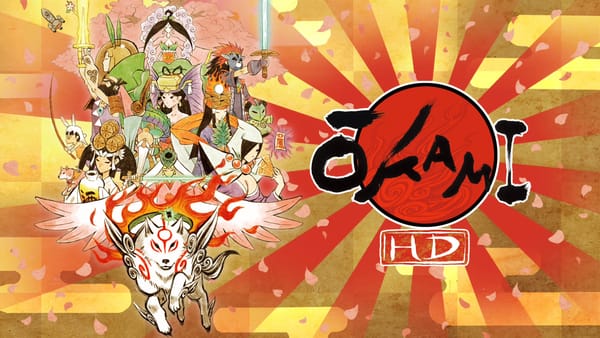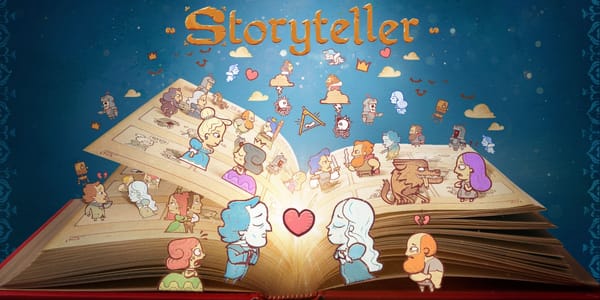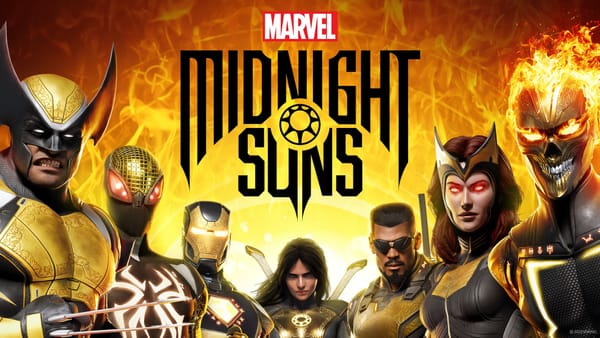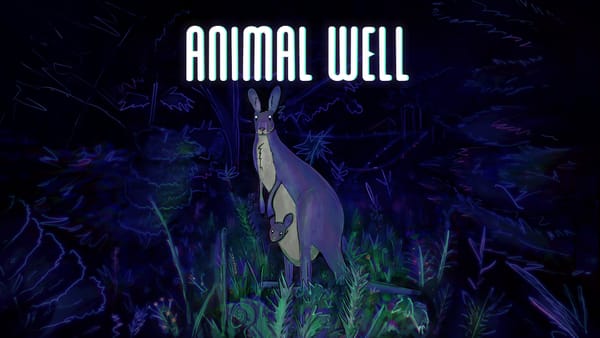Inscryption and the elided uncanny
The unwatched eye still gazes
Something is wrong from the moment you begin Inscryption. When you first boot up the game, the New Game button is unusable. You can see its contours, but it’s grayed out, unclickable. Continue is right next to it, however. Moreover, it’s functional. So it is that your first action in Inscryption is to continue.
Weird, I remember thinking, but not for too long. The inertia of gameplay is a powerful force, and in the case of Inscryption, I found myself all too happy to forget that initial uncanny feeling that something wasn’t right just as soon as I was engaged by a horror-tinged, roguelike card battler surrounded by escape-the-room elements. If you want to talk maximalism, look no further than the first act of Inscryption. Genres! Genres galore! You sit at a table across from a glowing set of eyes that implore you to play a card game based on squirrels, teeth, and ritual sacrifice. At any point, you can get up from that table and explore the set of eyes’ cabin, discovering secrets in the cramped and presumably dank room, the rewards of which help you when you sit back down to play cards. When you eventually lose, your unknown captor reaches across the table with gnarled, rootlike hands and kills you, capturing your likeness and placing it into a card. Then you start again, your own death-card mixed in with the rest. It’s dark, weird, difficult, and fun, something worthy of an endless mode released six months its initial launch. If this were the entire game, it would still be very good. But what makes Inscryption so interesting is the way it progresses from there, the way it knows you’ve forgotten that all of this began with Continue—and the way it intends to remind you.
[Oh, look! A spoiler break! Here’s the thing: I think Inscryption is a wholly original, if flawed game that is worth playing unspoiled. I personally managed to avoid spoilers until it launched on Mac the other week, and, boy, am I glad for that. So, if you are a person who likes at least one of the following, do yourself a favor and stop reading here until you’ve played all of Inscryption:
- Creepypasta and/or horror
- Deck-builders
- Videogames about videogames
Sound at all like you? Cool. Me, too. Okay, moving along for the spoiler-unconcerned among us.]
Your reward for eventually defeating and subsequently killing the mushroom-speckled madman across from you is the New Game button. Oh. Oh right, I thought when it popped up. How could I forget? In order to progress the game, you have to begin a new game right then, somewhere around the midpoint of your time with Inscryption. It’s hard to describe the feeling this produces in the player. It goes against a base instinct you may not realize you have: that the commonplace New Game menu item, when chosen after beginning a game, any game, is a fearful thing. It sits there like a traffic cone to be avoided, a red light on the stove telling you the surface is hot. You worry you might lose your progress if you accidentally press it. You might begin to think more deeply about autosave features. You fret, especially in a difficult game, that if it does delete your save, you might not be able to progress back to where you’ve so painstakingly progressed. Which is why, when Inscryption forced me to start a new game several hours into the experience, I felt afraid on a fundamental level, from years of accumulated gameplay, that I was doing something irreversible.1
When you do finally click New Game, Inscryption reboots and looks much more normal than before. The 3D graphics are replaced with a 2D game that would be at home on the Game Boy Color, or at least a Game Boy Color with more processing power. Your previous would-be murderer is present, but in a much tamer form. The game is still a card-based battler, but a much more typical one, with multiple sets of cards from which to build a deck and save the world. It’s all very expected from a genre standpoint, which is why you spend the entirety of this normality worrying that something is still very, very wrong.
And it is. Things go haywire in short order, and there is a third act after this second one. The story’s conclusion plays with existential questions and elicits a gnawing sense of fear and loss. Emotionally, I think it is resonant, if overwrought in terms of its final set piece. For a game that once felt evocatively cramped and creaky, Inscryption has a much louder ending than I would have preferred. Still, few games play with this many ideas so admirably, and few are so confident. For better or worse, Inscryption lays all its cards on the table, and I, for one, am happy to play along.
Now is as good a time as any for me to acknowledge that, in addition to its card-based gameplay, Inscryption also features a good amount of FMV. There’s a whole frame story about a fake YouTuber, Luke Carder, or the Lucky Carder, who has found the game you are playing in a box in the woods after opening a pack of cards for an out-of-print game called, you guessed it, Inscryption. Meta! I’ll admit, while I did enjoy the narrative frame of playing something that was an in-fiction object, the arc of the FMV portions—which is basically a murder mystery plus some inscrutable ARG nonsense about, *checks notes*, yes, Hitler—is not something I found to be all that compelling. To me, fiction is not obligated to explain every facet of its lore, and indeed retaining some essential mystery is good for stories in my view. But videos explaining the “secret true ending” of Inscryption have millions of views on YouTube, so what do I know? ↩





